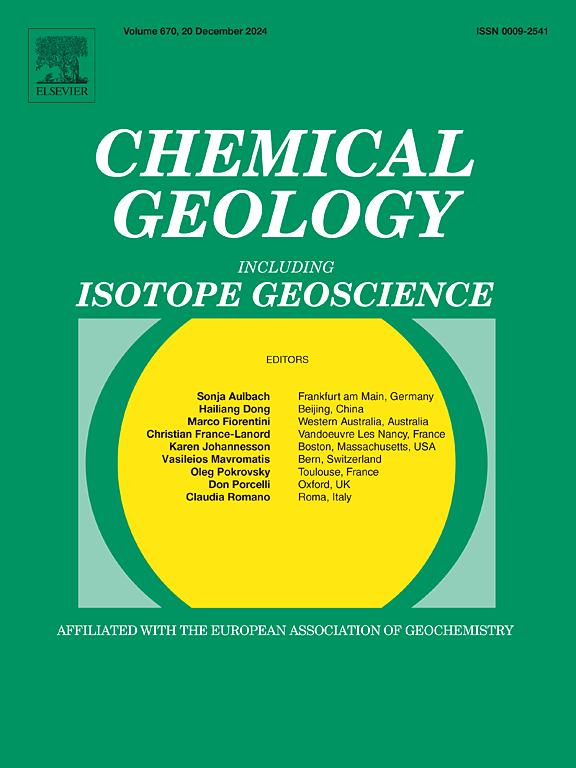Calibrating elemental salinity proxies in Holocene sedimentary environments
IF 3.6
2区 地球科学
Q1 GEOCHEMISTRY & GEOPHYSICS
引用次数: 0
Abstract
Most information regarding salinity in deep-time paleoenvironments is derived from fossil assemblages and paleogeographic configurations, although salinity interpretations based on fossils can be problematic due to, for instance, the unknown salinity tolerances of extinct clades. Although recently developed elemental salinity proxies (i.e., B/Ga, Sr/Ba, and S/TOC) for shales and mudstones have indicated that some ancient seas may have been less saline than previously assumed, the calibrations of these proxies in modern environments and the limits of their application to deep-time systems require further testing. In this contribution, we compare watermass salinity with elemental salinity proxies in modern and Holocene sedimentary environments representing a wide range of salinity conditions―from freshwater to marine―in North America (Lake Superior, Chesapeake Bay, and Gulf of Mexico), northern Europe (Baltic Sea), and Argentina (Laguna Mar Chiquita). Our results show agreement between observed watermass salinity and interpretations based on sedimentary salinity proxies with a single exception: two marine sites on the inner continental shelf of the Gulf of Mexico yielded B/Ga ratios indicative of freshwater to brackish conditions. The anomalously low boron concentrations at these sites may be related to upward diffusion of freshwater from underlying coastal plain facies deposited during the Last Glacial Maximum. In contrast, the Sr/Ba proxy accurately records the terrestrial-to-marine transition at these sites. Paradoxically, Sr/Ba in lake sediments shows wide ranges related to differences in sediment sources and lake-water chemistry, which highlights the necessity of accurately understanding lake dynamics before interpreting sedimentary salinity proxies. Finally, we tested the influence of clay-mineral assemblages on sediment B/Ga, demonstrating that clay mineralogy is generally not a first-order control on salinity interpretations. Our results strongly support the general robustness of elemental proxies for paleosalinity reconstruction while highlighting the need to take potential confounding factors into consideration.
求助全文
约1分钟内获得全文
求助全文
来源期刊

Chemical Geology
地学-地球化学与地球物理
CiteScore
7.20
自引率
10.30%
发文量
374
审稿时长
3.6 months
期刊介绍:
Chemical Geology is an international journal that publishes original research papers on isotopic and elemental geochemistry, geochronology and cosmochemistry.
The Journal focuses on chemical processes in igneous, metamorphic, and sedimentary petrology, low- and high-temperature aqueous solutions, biogeochemistry, the environment and cosmochemistry.
Papers that are field, experimentally, or computationally based are appropriate if they are of broad international interest. The Journal generally does not publish papers that are primarily of regional or local interest, or which are primarily focused on remediation and applied geochemistry.
The Journal also welcomes innovative papers dealing with significant analytical advances that are of wide interest in the community and extend significantly beyond the scope of what would be included in the methods section of a standard research paper.
 求助内容:
求助内容: 应助结果提醒方式:
应助结果提醒方式:


